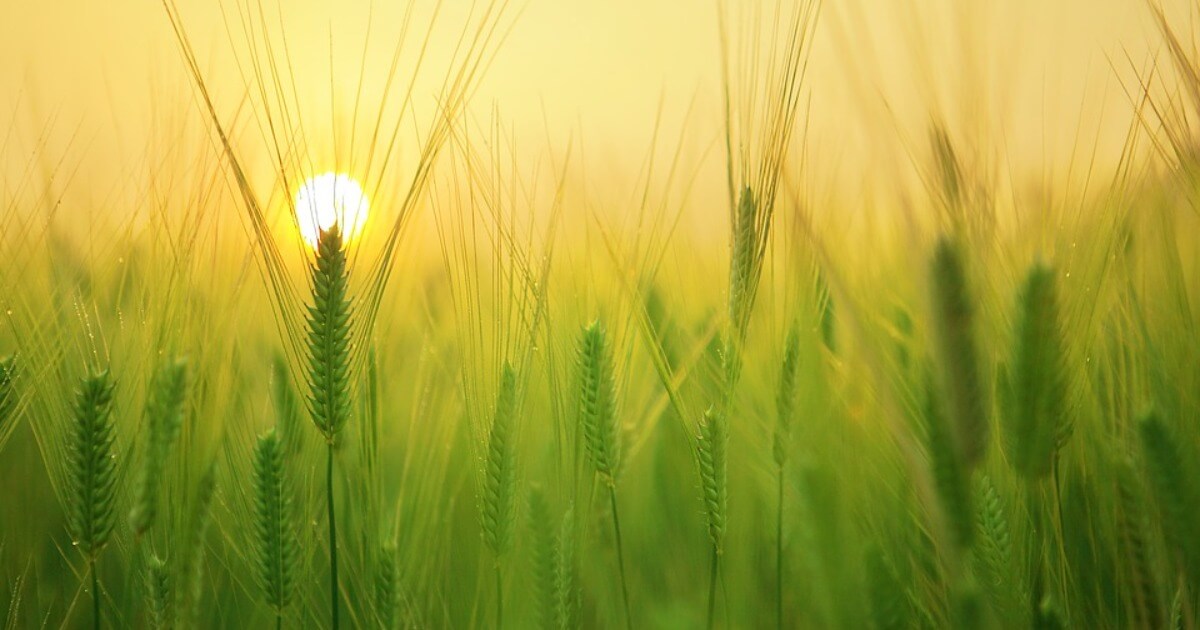Crop Rotation, Increased Nutrients and Better Health
Eating locally grown, seasonal vegetables is the best health supplement.
May 1, 2021

Reflecting upon the caliber of today’s politicians (of every stripe) in charge of our welfare, it’s hard to imagine that once upon a time, statesmen could do the governing equivalent of chewing gum and walking at the same time.
In the U.K. in the 18th century, Viscount Charles Townshend, brother-in-law of prime minister Robert Walpole, was Secretary of State in the department that was the precursor of today’s Foreign Office.
Rotating crops and improving soil
Townshend was also the institutor of crop rotation, one of the most important innovations of the British Agricultural Revolution.
“Turnip” Townshend, as he became known, promoted the practice of growing four opposing crops in the same ground, one following the other, plus a fodder crop for livestock and a period of fallow farming — the process of leaving soil unsown for at least one growth cycle.
This system of planting in rotation was first employed in the 16th century in what today is northern Belgium. The method improved soil fertility.
It helped restore plant nutrients which prevents the build-up of borers, bugs and weevils that establish themselves when a single crop is repeatedly sown. Livestock could be bred year-round.
Immediate favorable results
Almost immediately there was an increase in crop and livestock yields.
Crop rotation requires time and patience, not qualities we any longer afford much respect.
The USA’s corn belt is called that because that’s exactly what it is – a belt cinching up North Dakota, South Dakota, Nebraska, Kansas, Minnesota, Iowa, Missouri, Wisconsin, Illinois, Indiana, Michigan, Kentucky and Ohio, 13 out of 50 U.S. states, in mile upon mile upon mile of corn.
Monocropping, soil depletion and political stalemate
96 million acres of U.S. land are given over to the cultivation of that
one single crop. For the last 75 years. It’s called monocropping.
And in the U.S., the monocropping of corn is so heavily subsidized by the government, woe betide the election chances of any party that hints at removing it.
No matter what crop becomes the focus of repeat planting, the same result occurs. The soil is depleted of nutrients. Pests compete to flourish. Weeds take over.
The only way to redress the imbalance and achieve the regular bonanza crops required of the market is to bolster the land with regular and thorough doses of synthetic fertilizers and herbicides.
Industrial farming equals lowered nutrient levels
Wherever farming has become an industrial business, nutrient levels in the soil have plummeted. Vegetables and fruit no longer contain the essential properties they contained as recently as 50 years ago.
Spinach has lost 53% of its potassium and 60% of its iron. Broccoli has lost 75% of its calcium. Vegetables have lost at least 24% of their magnesium – carrots 75% of it.
More nutrients in 1940s food than in 2021
To get the same amount found in one carrot in 1940, you need to eat four today. If you want the iron content from fruit your parents got in 1940, you’d have to eat three apples or oranges to their one. To extract the same amount of Vitamin A, eight oranges to their one.
The quality of soil is not the only problem. Demanding the freedom to eat strawberries and asparagus year-round, we import produce from around the world.
Chilled transport lowers essential nutrients
Chilled transportation and storage of fresh fruit and vegetables also account for declines in their nutrient levels.
Over 10 days, kept under supermarket conditions, broccoli loses 70% of its gluco-salinate and 60% of its antioxidant flavonoids.
It’s not necessary to know what these elements are, only to understand that they are important to our wellbeing. And they are becoming diminished through the methods employed to bring produce to consumers.
Chilling in the home refrigerator is not much better
Our habit of a large weekly shop is another culprit. As soon as some fruits and vegetables are home-refrigerated, they can lose as much as 50% Vitamin C and other nutrients over the course of a week.
Shopping locally increases our health
We are encouraged to shop locally and in season to reduce food’s carbon footprint and increase the health of the planet. But to shop not just locally and seasonally but from farm sources increases our health.
Local farms, CSA (Community Supported Agriculture) and boxed schemes generally practice crop rotation and organic farming.
Not everyone is able to afford them. If so, buy frozen fruit and vegetables. They’re flash frozen at their nutritional peak as soon as they are picked.
Supplements are indicative of poor nutrition
If you don’t believe nutrient levels in produce are diminished, take a look at your bathroom shelf. How many bottles of supplements are lined up along it for your night-time swallow? How many do you remember noticing in your grandparents’ medicine cabinet?
It seems we don’t rely any longer on nutrition, only on nutrients. Last year, the global dietary supplements market was worth $140.3 billion. It’s expected to expand annually by 8.6% for the next 7 years.
Food that’s good for you not for investors
Instead of putting your money into tablets, why not spend that money on buying food sold at near its nutritional best from farmers focusing on the quality of their soil to produce food that’s good for you and not on Big Food produce grown for the good of their investors’ dividends.
That said, vegetables are still good for you and the new season’s crop is coming in now.
Spring Vegetables Salad with Soft Cheese
Serves 4
Any vegetables you like. I like these, for a spring green salad:
4 baby courgettes/zucchini
20ml /1¼ tablespoons vegetable oil
300g/10½ oz broad beans, podded and skinned
(skins come off easily once boiled)
200g/7oz thin asparagus
6-8 French breakfast radishes (the long ones)
80g/3oz Chevrette or other soft goat’s cheese,
or Boursin, or fromage frais
Zest and juice of 1 large scrubbed lemon
30-40ml/1-1 ½ fl oz olive oil
1 small garlic clove, peeled (optional)
Small handful fresh mint leaves, torn
50g/1½oz pea shoots
Sea salt
but everything’s optional…
Slice the courgettes/zucchini longways 4mm/⅛ inch thick, brush with vegetable oil and brand on a ridged grill, removing when flabby to a platter.
Boil the broad beans and peas in salted water until tender, 1-2 mins. Remove with a slotted spoon, skin the broad beans (optional but optimal).
Boil the asparagus in the same water until just tender, 2-3 mins. Drain on paper towels. Shave the radishes on a mandolin or with a potato peeler. Add everything to a platter and toss gently with your hands to combine.
Whisk together till emulsified the lemon juice, zest and olive oil with a grating of garlic to taste, season, pour over the salad, toss gently but well.
Drop teaspoons of soft cheese here and there and scatter over mint leaves, pea shoots and sea salt.
Takeaways
The subsidization of the mono cropping of corn in the US has completely depleted the soil of all its nutrients.
Global Cuisine: Nutrient levels in the soil have plummeted with farming having become an industrial business rather than a scientific endeavor.
How did we transition from crop rotation — that enriches soil fertility, to mono cropping — that depletes it?
If you want the iron content from fruit your parents got in 1940, you’d have to eat three apples to their one! That’s how much nutrient levels in the soil have plummeted.
Importing produce from around the world means long hours of transportation and storage - result? - steep decline in nutrient levels of the food.
Global Food: Shopping locally and seasonally from farm sources will reduce food’s carbon footprint and increase the health of the planet.
Food tip: Buy frozen fruit and vegetables — They’re flash frozen at their nutritional peak as soon as they are picked!

